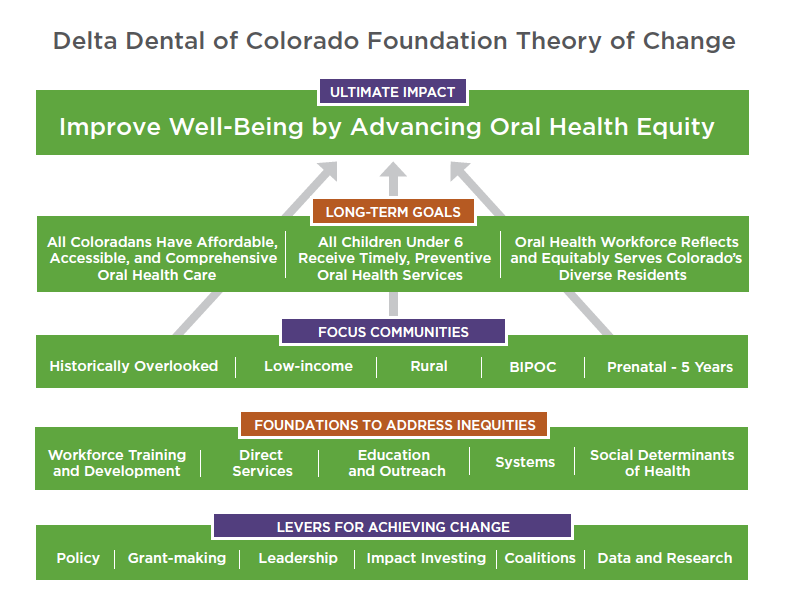The oral health care field is disproportionally represented by white professionals, especially for higher-paying positions like dentists and hygienists, while dental assistant positions are disproportionately represented by people of color. Through our grant-making, we hope to provide new avenues for communities of color to enter the profession and access opportunities for advancement. We believe tapping into local talent will provide pathways to prosperity to populations that are historically excluded and diversify the oral health-care field which is important to ensure greater health outcomes for all people. According to the Colorado Health Institute, Black and Hispanic patients with providers of the same race are more likely to consistently seek preventative care. They are also more likely to be satisfied with their health care overall.
(Citation: Saha, S., Komaromy, M., Koepsell, T. D., & Bindman, A. B. (1999). Patient-physician racial concordance and the perceived quality and use of health care. Archives of internal medicine, 159(9), 997–1004
Initiative
Goal
Create a more racially and ethnically diverse oral health workforce that reflects the demographics of our state, resulting in further reduction of access-to-care barriers and increasing culturally and socially relevant oral health-care delivery.
Focus Population
Communities of color with the desire to advance their careers in oral health care by pursuing jobs such as dentists, hygienists, and dental assistants.
Projected Outcomes
Increase diversity in the oral health workforce resulting in prosperity for BIPOC oral health professionals and increased access to care for communities of color.
Data:
- 92% of dentists in Colorado are white, non-Hispanic.1
- 84.9% of Colorado hygienist are White non-hispanic.1
- 40% of dental assistants in Colorado are people of color, and 34.4% of dental assistants are Latinx.1
- 11.9% of Coloradans are native Spanish speakers.1
- 17% of Coloradans reported unfair health care treatment due to race or skin color.2
- Black dental school students are 20% more likely than their classmates to graduate with over $300,000 in debt.3
- 14% of white dental students graduate with no debt, compared to 10% of Hispanic/Latinx students or 2.4% of Black students.3
Sources:
1 Colorado, 2018, American Community Survey
2 Colorado Health Access Survey 2019
3 American Dental Education Association (ADEA), Survey of Dental School Seniors, 2017 Graduating Class


